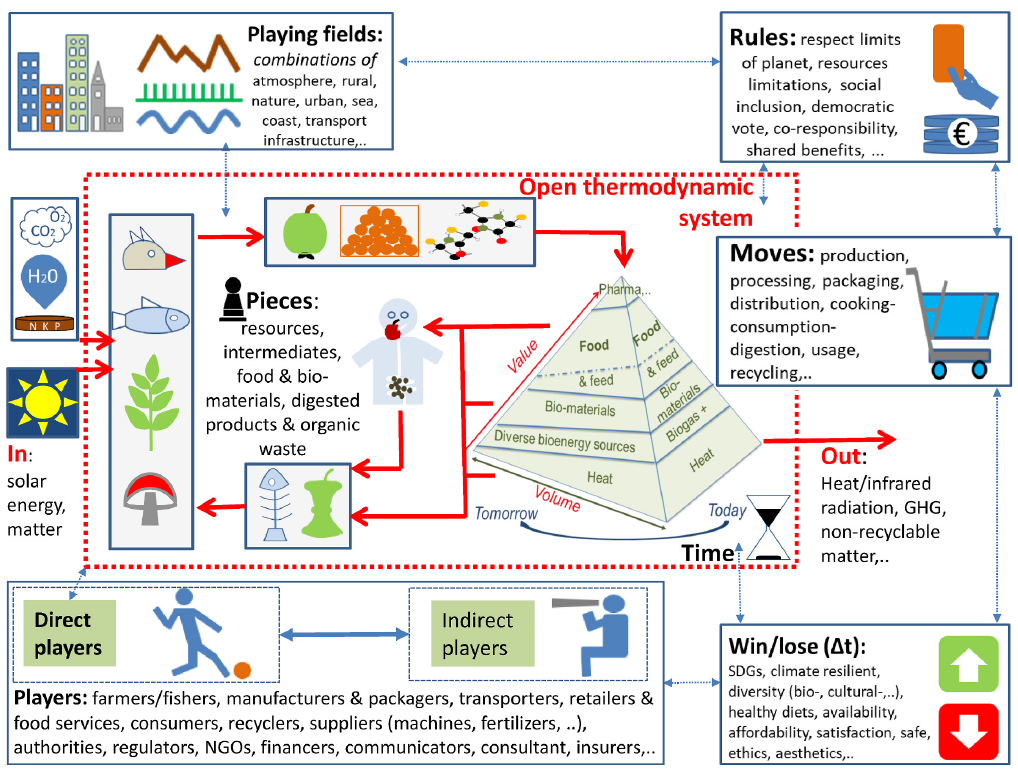Sustainable food systems science based on physics’ principles

The article, co-authored by FOODPathS coordinator Hugo de Vries, uses principles from physics to explain how sustainable food systems work. It views food systems as open thermodynamic systems powered by solar energy, with key elements like players (people), pieces (resources), moves, and rules. These systems are compared to complex processes that exist in a “melting zone,” balanced between being too rigid and too chaotic.
The article also draws a parallel with the four fundamental forces in physics—strong, weak, electromagnetic, and gravitational—saying that these forces help shape how people and resources interact in food systems. The key takeaway is that sustainable food systems need balance. Instead of aiming for endless growth, they should focus on finding patterns that shift between stability and flexibility.
The idea promotes working as a network rather than focusing on single food chains, encouraging diversity in food products, resources, and diets. This approach helps food systems become more adaptable and resilient, which is essential for creating truly sustainable and circular food systems.
Would you like to discover more? Download the article by clicking the button down below.